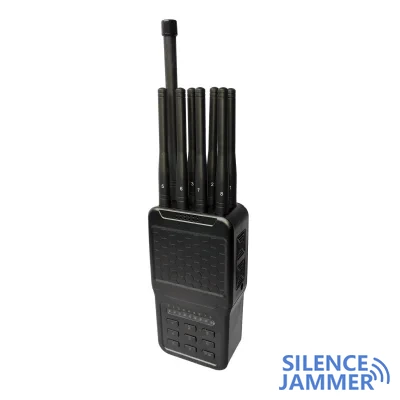As the importance of the Global Positioning System (GPS) in the military and civilian fields continues to increase, ensuring the stability and reliability of its signals has become an urgent problem to be solved. GPS signals are susceptible to enemy interference due to their low transmission power and fixed frequency, which is particularly evident on the modern battlefield. To meet this challenge, the U.S. Defense Advanced Research Projects Agency (DARPA) has developed a new anti-interference method: GPS pseudo-satellite technology. This article will introduce this technology and its importance in detail, and explore multi-faceted anti-interference strategies in conjunction with the development of GPS jammers.
Pseudo-satellite technology is achieved by loading GPS navigation signal transmitters on drones or ground platforms to simulate the functions of real GPS satellites. DARPA's research focuses on using drones to form pseudo-GPS constellations to enhance the navigation capabilities of its own forces in a jammed battlefield environment.
Pseudo-satellites broadcast high-power GPS signals through flying drones to generate an artificial GPS constellation over the battlefield. Typically, pseudo-satellites carried by four drones can cover a 300 square kilometer war zone. The signal power emitted by these pseudo-satellites is much higher than the enemy's jamming signals, allowing the receiver to receive stable navigation information.
Technical Implementation and Challenges
Existing GPS receivers only need software upgrades to use pseudo-satellite signals. When using pseudo-satellites, the receiver needs to know the location of these pseudo-satellites, which is a major technical challenge. DARPA and Collins designed a solution that uses low data rate information to transmit the location of pseudo-satellites to the receiver, enabling it to navigate in a dynamic environment.
In order to verify the feasibility of pseudo-satellite technology, DARPA conducted multiple experiments on aircraft at different altitudes. The results showed that even at an altitude of 7,500 meters, the navigation accuracy only dropped from 2.7 meters to 4.3 meters. This result shows that pseudo-satellite technology has significant advantages in anti-interference and improving navigation accuracy.
Diversified Applications of Pseudo-Satellites
Pseudo-satellites can not only be carried entirely on drones, but also can be mixed with ground and airborne transmitters. Although ground pseudo-satellites have a smaller coverage range, they can improve navigation accuracy. To further overcome interference, pseudo-satellites can transmit high-power signals to significantly enhance the signal strength received by ground receivers.
In addition, the G-STAR high-anti-interference GPS receiver jointly developed by Northrop Grumman and Collins uses zeroing and beam steering methods to improve anti-interference capabilities through digital beamforming. The development of these technologies not only improves the reliability of navigation systems, but also provides better protection for civil and military fields.

Civilian GPS anti-interference technology
In the civilian field, GPS signals also face the challenge of interference. Unintentional interference is usually of wide-band type, which is different from military interference, but it can also affect the stability of GPS signals. To this end, the US Electro-Radiation (ERI) company has developed an interference suppression unit (ISU) suitable for new and old GPS receivers. The device includes a patch antenna and an electronic device that can effectively suppress broadband noise and narrowband interference, significantly enhancing the anti-interference capability of GPS receivers.
In contrast to pseudo-satellite anti-interference technology is the GPS signal jammer, which blocks the reception of GPS signals by emitting strong interference signals, making the positioning and navigation systems unable to work properly. Although in the military field, jammers can be used to disrupt the enemy's navigation system, their potential threats in the civilian field should not be ignored. For example, some illegal operations may use GPS signal jammers to evade monitoring or interfere with public services.
Conclusion: The importance of anti-interference technology
GPS pseudo-satellite technology and other anti-interference means provide reliable protection for future battlefields and civilian navigation. In military applications, pseudo-satellite technology can ensure the navigation accuracy of troops in an interfered environment and improve combat effectiveness. In the civilian field, anti-interference technology ensures the stability and reliability of daily navigation and positioning services. At the same time, the development of GPS signal jammers reminds us that we need to strengthen supervision and technical prevention to avoid its negative impact on social security and public services.

Diversified Applications of Pseudo-Satellites
Pseudo-satellites can not only be carried entirely on drones, but also can be mixed with ground and airborne transmitters. Although ground pseudo-satellites have a smaller coverage range, they can improve navigation accuracy. To further overcome interference, pseudo-satellites can transmit high-power signals to significantly enhance the signal strength received by ground receivers.
In addition, the G-STAR high-anti-interference GPS receiver jointly developed by Northrop Grumman and Collins uses zeroing and beam steering methods to improve anti-interference capabilities through digital beamforming. The development of these technologies not only improves the reliability of navigation systems, but also provides better protection for civil and military fields.

Civilian GPS anti-interference technology
In the civilian field, GPS signals also face the challenge of interference. Unintentional interference is usually of wide-band type, which is different from military interference, but it can also affect the stability of GPS signals. To this end, the US Electro-Radiation (ERI) company has developed an interference suppression unit (ISU) suitable for new and old GPS receivers. The device includes a patch antenna and an electronic device that can effectively suppress broadband noise and narrowband interference, significantly enhancing the anti-interference capability of GPS receivers.
The development of GPS jammers and their impact
The opposite of pseudo-satellite anti-interference technology is the GPS tracker jammer, which blocks the reception of GPS signals by emitting strong interference signals, making the positioning and navigation systems unable to work properly. Although in the military field, jammers can be used to disrupt the enemy's navigation system, their potential threats in the civilian field should not be ignored. For example, some illegal operations may use GPS tracker jammers to evade monitoring or interfere with public services.

Conclusion: The importance of anti-interference technology
GPS pseudo-satellite technology and other anti-interference means provide reliable protection for future battlefields and civilian navigation. In military applications, pseudo-satellite technology can ensure the navigation accuracy of troops in an interfered environment and improve combat effectiveness. In the civilian field, anti-interference technology ensures the stability and reliability of daily navigation and positioning services. At the same time, the development of GPS signal jammers reminds us that we need to strengthen supervision and technical prevention to avoid its negative impact on social security and public services.
With the continuous advancement of science and technology, these technologies will contribute more to the security and stability of the global navigation system. By strengthening technical research and development and international cooperation, the GPS navigation system will continue to provide important guarantees for human production, life and safety. While applying anti-interference technology in all aspects, we must also be vigilant to guard against possible threats posed by GPS signal jammers and ensure the continued stability and reliability of the navigation system.




